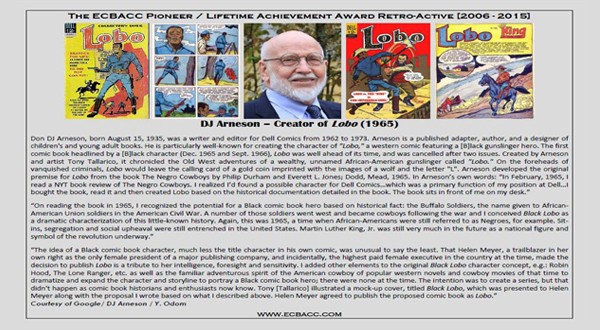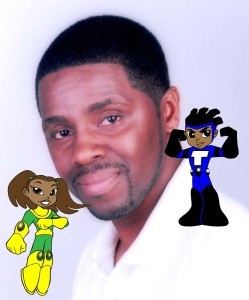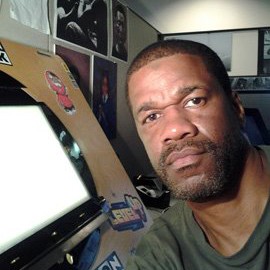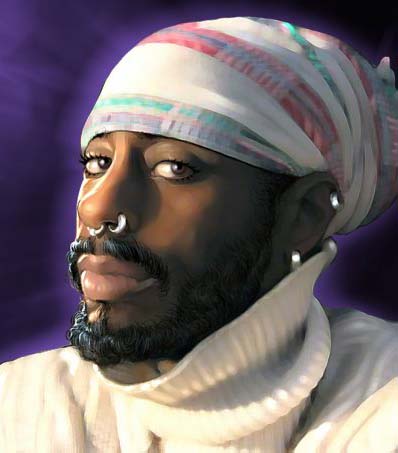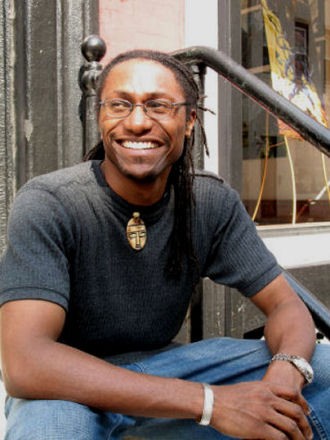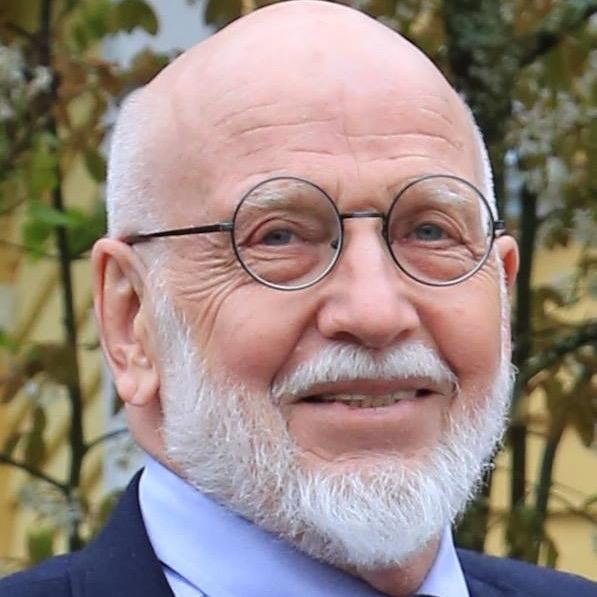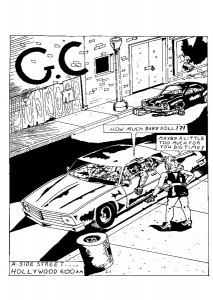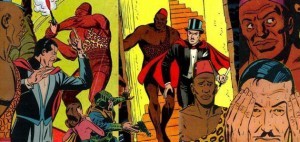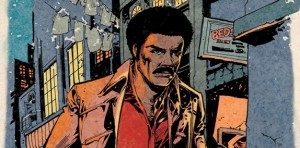The ECBACC Pioneer / Lifetime Achievement Award was inaugurated in 2004 to honor those men and women, many unsung, who have made innovative, dynamic and lasting contributions to the cartoon, comic book & sci-fi industry and who have paved the way for others. This year’s Awards go to five recipients who are modern-day creative pioneers who have maintained a consistent presence in the industry for more than 2 decades.
The ECBACC Pioneer Recipients:
Reggie Byers: Philadelphia native, creator of the comic book Kidz of the King, and a 30-year veteran in the industry. His past comic book illustration credits include Robotech: New Generation for Comico, Shuriken, Jam Quacky – The Hip-Hop Duck, The Official Philadelphia Soul Football Team Comic Book and Crescent. In 2006, Ten Talents Productions was granted the license to produce “Kidz” as an animated series on DVD, which debuted in October 2008. Byers is working on a number of projects, among them: Godman (The Story of Jesus Christ) and a new Kidz of the King comic series. He has been publishing comics independently since 1985.
Dawud Anyabwile: Emmy Award winning artist and the co-creator and illustrator of the comic book Brotherman: Dictator of Discipline published in 1990. This pioneering graphic illustrator has influenced a generation of artists and writers while selling more than 750,000 copies without the help of a major publisher or distributor. Brotherman has received international exposure and acclaim in both print and television media. Anyabwile has also worked as a character designer for two of Nickelodeon’s highest rated shows, “The Wild Thornberrys” and “The Rugrats.” In 2013 Anyabwile and his brother Guy A. Sims brought back the popular “Drawing from the Soul” art exhibit to the Auburn Avenue Research Library in Atlanta, GA. The “Drawing from the Soul” art exhibit features illustrations and art from the pioneering comic book Brotherman, the series that introduced one of the most authentic and enduring Black heroes ever created.
Mshindo Kuumba I: Acclaimed graphic artist, largely a self-developed talent, acquired each aspect of his art one skill at a time. Studying one aspect of the process at a time has allowed Mshindo to develop strong foundational skills that have become the hallmark of “The Mshindo Look.” Mshindo’s talents have been recognized by comic companies like A&B, ANIA, Brainstorm, Continuity, Defiant, Valiant, Broadway, Crusade, Kevlar, Amara and DC Comics. As an art director, visual artist, comics creator, cover artist, dancer, martial artist and mentor, Mshindo has lent his drawing and painting skills to such comics as Jaycen Wise, The Horsemen, Ebony Warrior, The Fringe, Stormbringers Universe, Urban Style Comics Dreadlocks, Batman Chronicles, Nightwing, Impulse, Urban Sprawl, Genecy, Supergirl and Advent Comics. In 2011 he was featured in the seminal work exploring the Black comic experience titled Black Comix by John Jennings and Damian Duffy. Mshindo continues to grow a reputation for being a “true artist.” Currently, Mshindo is honing his digital skills to complete yet another learning cycle in his more than 25 years’ of experience in this industry.
Eric Battle: A Philadelphia veteran graphic artist whose career as an illustrator has covered the span of comic books and editorial, fashion, children’s book and advertising illustration. Battle has drawn for some of the most recognized companies in the industry: Marvel Comics (Cable, X-Factor), DC Comics (Wonder Woman, Batman, Aquaman, Green Lantern, Batgirl, Vampirella, and others), Milestone Media (Kobalt and Hardware), Top Cow, Dynamite, Harris, Dark Horse, and Aspen MLT, Inc. / Valhalla Motion Pictures Studios. He has illustrated Tarzan / Blackjack with Alex Simmons for United Media’s Sunday syndicated comic strip. He has also collaborated with bestselling novelist (The Late) L.A. Banks on her Vampire Huntress Legends novel series and recently with World Fantasy Award winner Nnedi Okorafor on her novella, The Book of the Phoenix / African Sunrise. Battle produced the key artwork in SomosArte’s “Marvelous Color” exhibit in New York City. He has collaborated with best-selling science-fiction and fantasy authors, George R.R. Martin and Daniel Abraham on Martin’s series, Wildcards: The Hard Call. Battle completed the 6-issue mini-series The Scourge in collaboration with Aspen MLT, Inc. and AMC’s “The Walking Dead” producer, Gale Anne Hurd, through her film company, Valhalla Motion Pictures Studios. Battle has also worked with the Philadelphia Mural Arts Program.
The ECBACC Lifetime Achievement Recipient:
Don DJ Arneson: Was born August 15, 1935, was a writer and editor for Dell Comics from 1962 to 1973. Arneson is a published adapter, author, and a designer of children’s and young adult books. He is particularly well-known for creating the character of “Lobo,” a western comic featuring a Black gunslinger hero. The first comic book headlined by a Black character (Dec. 1965 and Sept. 1966), Lobo was well ahead of its time, and was cancelled after two issues. Created by Arneson and artist Tony Tallarico, it chronicled the Old West adventures of a wealthy, unnamed African-American gunslinger called “Lobo.” On the foreheads of vanquished criminals, Lobo would leave the calling card of a gold coin imprinted with the images of a wolf and the letter “L”. Arneson developed the original premise for Lobo from the book The Negro Cowboys by Philip Durham and Everett L. Jones; Dodd, Mead, 1965. In Arneson’s own words: “In February, 1965, I read a NYT book review of The Negro Cowboys. I realized I’d found a possible character for Dell Comics…which was a primary function of my position at Dell…I bought the book, read it and then created Lobo based on the historical documentation detailed in the book. The book sits in front of me on my desk.”
“On reading the book in 1965, I recognized the potential for a Black comic book hero based on historical fact: the Buffalo Soldiers, the name given to African-American Union soldiers in the American Civil War. A number of those soldiers went west and became cowboys following the war and I conceived Black Lobo as a dramatic characterization of this little-known history. Again, this was 1965, a time when African-Americans were still referred to as Negroes, for example. Sit-ins, segregation and social upheaval were still entrenched in the United States. Martin Luther King, Jr. was still very much in the future as a national figure and symbol of the revolution underway.”
“The idea of a Black comic book character, much less the title character in his own comic, was unusual to say the least. That Helen Meyer, a trailblazer in her own right as the only female president of a major publishing company, and incidentally, the highest paid female executive in the country at the time, made the decision to publish Lobo is a tribute to her intelligence, foresight and sensitivity. I added other elements to the original Black Lobo character concept, e.g.: Robin Hood, The Lone Ranger, etc. as well as the familiar adventurous spirit of the American cowboy of popular western novels and cowboy movies of that time to dramatize and expand the character and storyline to portray a Black comic book hero; there were none at the time. The intention was to create a series, but that didn’t happen as comic book historians and enthusiasts now know. Tony [Tallarico] illustrated a mock-up cover, titled Black Lobo, which was presented to Helen Meyer along with the proposal I wrote based on what I described above. Helen Meyer agreed to publish the proposed comic book as Lobo.”

